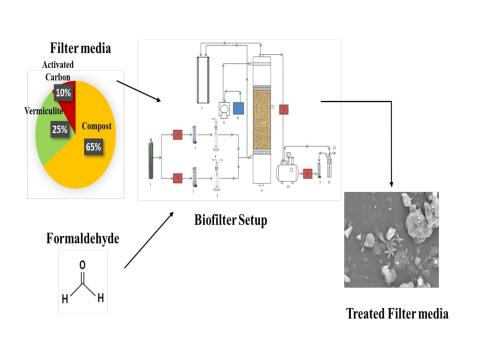You are here
Formaldehyde degradation using Biofilter loaded with Compost, Vermiculite and Activated Carbon: Performance and Optimization

Formaldehyde is one of the typical indoor pollutants causing theprevalence of acute health issues among those residing in indoor environments. Biofiltrationis a commonly adopted technique to treat indoor air pollutants. In this investigation, a biofilter was fabricated and compactly filled with compost, vermiculite and activated carbon (65:25:10) as a media composition for enhanced formaldehyde degradation. The influence of formaldehyde inlet concentration (0.01 – 1 gm-3g/m3) and EBRT (30 – 180 s) was studied to evaluate the biofilter performance. Their progression was assessed with dynamic operations in five phases with two stages each. The formaldehyde removal was achieved between the range of 32% to 98% with regular intervals of EBRT at 30, 60, 90, 120, 150 and 180 seconds, which depend upon varying their flow rate and inlet loading rate. The biofilter performance lasted for over 202 days with a 98% formaldehyde removal and 23 g/m3h-1biofilter capacity under the maximum EBRT (180 s) and inlet formaldehyde concentration (1 gm-3g/m3). The experimental findings demonstrated the efficacy of biofilter in withstanding substantial formaldehyde loading rate while maintaining an acceptable EBRT. The primary microbe responsible for formaldehyde degradation was identified to be as gram-negative bacteria.
